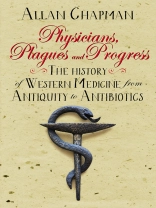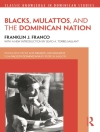Since the dawn of time, man has sought to improve his health and that of his neighbour. The human race, around the world, has been on a long and complex journey, seeking to find out how our bodies work, and what heals them.
Embarking on a four-thousand-year odyssey, science historian Allan Chapman brings to life the origin and development of medicine and surgery. Writing with pace and rigorous accuracy, he investigates how we have battled against injury and disease, and provides a gripping and highly readable account of the various victories and discoveries along the way. Drawing on sources from across Europe and beyond, Chapman discusses the huge contributions to medicine made by the Greeks, the Romans, the early medieval Arabs, and above all by Western Christendom, looking at how experiment, discovery, and improving technology impact upon one another to produce progress.
This is a fascinating, insightful read, enlivened with many colourful characters and memorable stories of inspired experimenters, theatrical surgeons, student pranks, body-snatchers, ‘mad-doctors’, quacks, and charitable benefactors.
Mục lục
Contents
List of illustrations XVII
Acknowledgments XXI
Preface XXVI
1 Physicians, Priests, and Folk Healers 1
Ancient doctors 2
Medicine in Egypt and other ancient cultures 5
Moses and the lepers: A saga from Sinai to Scandinavia 9
Hippocrates of Cos: Rational medicine, ethics, and the Oath
of c. 430 BC 12
Aristotle (384-322 BC) and the nature of living things 15
2 Galen: Surgeon to the Gladiators 19
Aelius Claudius Galenus of Pergamum: Surgeon, showman,
and public anatomist, AD 129-200/216 20
Galen the anatomist and physiologist 22
Galen’s physiology 24
Roman surgery 27
Celsus and his Encyclopedia of c.AD 30 31
Galen’s infl uence: Medicine, ethics, religion, and teaching
across fi fteen centuries 35
3 Arabia: The First Fruits of Medieval Medicine 38
Baghdad and The House of Wisdom 39
Fire and water: Transformative forces 40
Jabir (Geber) and Rhazes: Chemistry and medicine 41
‘I suppose that Avycen /Wroot nevere in no canon…’
(Chaucer) 47
Albucasis and Arabic surgery 49
Arabic medicine in retrospect 52
4 Divine Light: Seeing and Perceiving in the
Middle Ages 55
The anatomy of perception: What was ‘seeing’
believed to be? 56
Rainbows, colours, and perspective: Medieval Europe’s
new key to physics 61
Unravelling the colours of the rainbow: Medieval
Europe’s great discovery 64
Spectacles: The invention that changed the world 67
Couching for cataract: Albucasis and medieval eye surgery 69
The eye as an optical projector 72
5 Rahere the Jester Meets St Bartholomew 73
Early medieval care: Leech books and herbals 74
Salerno, near Naples: Europe’s fi rst hospital and
medical school 77
The founding of St Bartholomew’s Hospital in
twelfth-century London 82
Cure of body and cure of soul: How clean were
medieval people? 89
6 Spiritual Inspiration, Miracle, Possession,
Mental Illness, and the Brain 94
Discerning clinical illness from spiritual states 94
Epilepsy and the Hippocratic tradition in medieval Europe 98
Cells, chambers, and fl uid fl ows: The medieval explanation
for brain function 102
Margery Kempe (nee Burnham or Brunham) and
religious visionaries 108
‘Bedlam’: A place of asylum for the distressed? 111
7 In Time of Plague 113
Epidemics: Sin, nature, and the plague of the Philistines 114
The Black Death of 1347 and beyond 115
A miscellany of medieval maladies 124
8 Medicine and Surgery in High Medieval Europe,
1200-1500, Part 1: Medicine and Anatomy in Europe’s
Medieval Universities and Beyond 129
Population growth, prosperity, and innovation 130
Teaching anatomy, challenging myth, and the status of
experimental knowledge 132
Pus: Laudable or a liability? 135
Theodoric Borgognoni of Lucca: Surgeon, hygienist,
friar, and bishop 136
The first academic medical schools: A European
innovation 138
Mondino de Liuzzi of Bologna and his Anathomia 140
9 Medicine and Surgery in High Medieval Europe,
1200-1500, Part 2: Guy de Chauliac and the
Great Surgery of 1363 147
A scientifi c physician at the papal court in Avignon 147
Chirurgia Magna, or the ‘Great Surgery’: A medical
encyclopedia for future ages 149
Guy de Chauliac: Victim, survivor, and student of
the bubonic plague 154
So was medieval surgery barbaric? 154
10 Prince Hal and the Surgeons: The Rise of Medical
Professionalism in England after 1300 158
John of Arderne: Master surgeon of the age of Chaucer 159
An unfortunate incident of an arrow in the face 161
Towton Man: Sophisticated facial repair surgery in
early fi fteenth-century England 163
The anonymous surgeon of HMS Mary Rose in 1545 165
Gunpowder, God, and Europe’s surgical renaissance 167
The Royal College of Physicians and the Worshipful
Company of Barbers and Surgeons 170
11 Antiquity Found Wanting in Renaissance Italy:
Andreas Vesalius and His Infl uence 174
Renaissance Italy and the ‘lesser circulation’ of the blood:
Andreas Vesalius, Padua, and the new anatomy of
the Renaissance 176
The art of the anatomical illustrator 178
Vesalius and his De Fabrica of 1543 181
Realdo Colombo, the Vesalian tradition, and the secrets
of the heart 189
Ambrose Pare: Renaissance master surgeon 191
12 William Harvey and the Circulation of the Blood 195
Origins and education 197
Harvey establishes his professional career in London 199
Of hearts, paradoxes, and purposes: Harvey’s road to
the blood circulation 201
Announcing the whole-body circulation of the blood
in 1628 205
Therapeutic innovations around Harvey’s time 212
13 The Neurologist and the Archbishop of Canterbury,
Part 1: The Oxford Experimental Club 217
The hanging of Anne Greene 218
Dr Thomas Willis of Oxford: Pioneer of neurology 222
Fermentation, fevers, and chemistry 228
Arthur Coga and the sheep: Experiments with blood and
circulation 232
14 The Neurologist and the Archbishop of Canterbury,
Part 2: Brains, Minds, and Souls in Seventeenth-
Century England 236
The Reverend Robert Burton: Anatomist of Melancholy 236
Thomas Willis and his ‘circle’ 240
Death by lightning in 1666 246
Fathoming the working of the mind in seventeenthcentury
England 249
Archbishop Gilbert Sheldon, Doctor Willis, and the soul 254
15 Breathing and Burning: Cardiology, Chemistry,
and Combustion 258
The breath of life 258
Dr John Mayow: Air, fi re, blood, and life tested
in the laboratory 263
Robert Hooke and the dog 266
Richard Lower, Tractatus de Corde, and the foundation of
cardiology 267
Oxford’s enterprising apothecaries 271
16 John Wesley’s Primitive Physick and the British
Priest-Physician 274
The Reverend John Ward, MA: Experimentalist and
Shakespeare anecdote collector 275
John Wesley and simple medicine for the common man 279
The country vicar who paved the way for aspirin 283
Stephen Hales, Sydney Smith, and other medical
clergymen 285
17 The Duty of Care: New Hospitals, Charities, and
Medical Innovation in the Eighteenth Century 289
A new tide of hospitals: London 290
New hospitals across Great Britain 294
The hospital as a ‘museum’ of disease 298
Teachers and discoverers in the eighteenth-century
hospitals 301
John Hunter FRS 304
18 ‘Remember Poor Tom’o Bedlam’: Dealing with
the ‘Mad’ 307
‘Poor Tom’s a-cold’: Helping the insane in Stuart and
Georgian England 308
Mad-doctors and madhouses 310
The beginnings of compassionate care 311
The Reverend Dr Francis Willis and King George III 314
From scandal to care in York, and the rise of humane
treatment 317
19 Charismatics, Quacks, and Folk Healers into the
Early Industrial Age 322
Valentine Greatrakes: Irish gentleman faith healer 323
Bartholomew Fair and other fairground quacks 324
Learned quackery 327
Quacks, showmen, and doctors 329
Dover’s Powders and nostrums galore 336
Mesmerism and phrenology 337
20 Sewers, Soap, and Salvation: The Origins of
Public Health 339
The Reverend Thomas Robert Malthus, FRS 340
From cow to human: Dr Edward Jenner and the impact
of vaccination 342
Cholera 345
Sanitation, statistics, and the Broad Street pump 348
Dr John Snow and breakthrough at last 349
Sanitation, civil engineers, and salvation 350
21 ‘Them Damn’d Murderin’ Anatomists’: The
Expanding Medical Schools and the Supply of
Cadavers 354
The trade in ‘things’ 355
How to snatch a ‘thing’: The practicalities of
‘resurrecting’ 357
Edinburgh: The medical lion of the north 360
‘True Murderin’ Anatomists’: The Burke and Hare scandal,
Edinburgh, 1828 363
Dr Andrew Ure of Glasgow tries to raise the dead, 1818 365
Bishop and Head, the London ‘Burkers’, and the
Anatomy Act 367
St Bernard’s, the Romance of a Medical Student, 1888 368
Finding bones: A postscript 371
22 The Miracle of the Microscope 372
Joseph Jackson Lister, FRS: Quaker, microscopist, and
gentleman of science 375
Cells: Professor Virchow identifi es life’s building blocks 380
Understanding cancer 383
The French chemist and the German physician 386
23 Chemistry and the Control of Pain: Anaesthesia
and Beyond 394
Chemical anaesthesia: 16 October 1846, Boston, USA 395
Chloroform: The Scottish wonder drug 401
Anaesthesia, childbirth, and the Bible 403
Dr John Snow: Founder of scientifi c anaesthesiology 404
Morphine, cocaine, and the hypodermic 405
Peaceful slumbers: New drugs to comfort and calm 407
24 Glasgow, 1865: Young Jimmy Greenlees Meets
Professor Lister: Antiseptic Surgery and Beyond 410
Prelude: Vienna, 1847 411
Glasgow, August 1865 413
From antiseptic to aseptic surgery 416
The new surgery 417
The new operations 419
25 The New Professional Healer: The Medical and
Nursing Professions Take Shape 424
The Medical Act of 1858 425
Homeopaths, water-curers, and Victorian alternative
medicine 426
Nursing, the new medical profession: Sarah Podger,
Mary Seacole, and Florence Nightingale 429
Sir William Osler on the new physicians 435
26 The Wonderful Century 437
The drugs that hit the spot 437
Penicillin and antibiotics 439
Cancer: Radiology, chemotherapy, and body scans 442
Adjusting the body’s own chemistry, physics, and
engineering 446
Who am I? Scientifi c medicine and the soul 450
Conclusion: our modern duty of care 453
Appendix 1: Cataract Operation Performed by a
Traditional Shaman Surgeon in a Village to the East
of Agra, Northern India, c. 2010 457
Appendix 2: Stents and Tents 460
Notes 462
Further Reading 470
Index 505
Giới thiệu về tác giả
Dr Allan Chapman is a historian of science at Oxford University, with special interests in the history of astronomy and of medicine and the relationship between science and Christianity. As well as University teaching, he lectures widely, has written a dozen books and numerous academic articles, and written and presented two TV series, Gods in the Sky and Great Scientists, besides taking part in many other history of science TV documentaries and in The Sky at Night with Sir Patrick Moore. He has received honorary doctorates and awards from the Universities of Central Lancashire, Salford, and Lancaster, and in 2015 was presented with the Jackson-Gwilt Medal by the Royal Astronomical Society. Among his books are Slaying the Dragons. Destroying Myths in the History of Science and Faith (Lion Hudson, 2013), Stargazers: Copernicus, Galileo, the Telescope, and the Church. The Astronomical Renaissance, 1500-1700 (Lion, 2014), and Physicians, Plagues, and Progress. The History of Western Medicine from Antiquity to Antibiotics (Lion, 2016). He is also the author of the scientific biographies England’s Leonardo. Robert Hooke and the Seventeenth-Century Scientific Revolution (Institute of Physics, 2005), Mary Somerville and the World of Science (Canopus, 2004; Springer, 2015), and The Victorian Amateur Astronomer. Independent Astronomical Research in Britain, 1820-1920 (Wiley-Praxis, 1998; revised edn. Gracewing, 2017).












